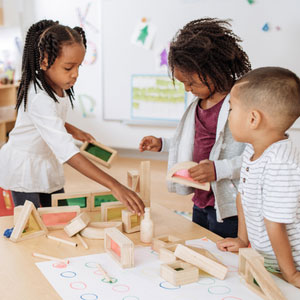
Tips for Teaching Social Skills

Date Published: March 8, 2022
Author: Jennie Brevik, RBT
Social skills are the skills we use every day to interact and communicate with others. They include verbal and non-verbal behavior, such as speech, gesture, facial expression, and body language. These are behaviors that are learned when we encounter social situations. While it may be easy for most people to learn how to respond in social situations, social interactions may be challenging for children on the autism spectrum. Here are several ways you can help improve social skills for children with ASD:
Social Skills Groups: In a social skills group, children can learn how to interact with peers in a naturalistic setting. The characteristics of a good social skills group will have the following:
- All of the members will be a similar age
- Participants will have similar behavior skills
- The group will meet once or twice a week for 1 to 2 hours
- The group will ideally have a 1 to 1 student to staff ratio
- Structured activities will have clearly defined objectives
- Programs will be individualized to each child
Social Stories: Social stories are short stories that teach a child how to respond appropriately in specific situations. Characteristics of a good social story include:
- Short and clear sentences
- Many visuals and pictures
- Information about the social cues
- Appropriate responses to social cues
- After the story is read, the therapist and child may engage in role-playing
- Examples of social stories:
- https://carolgraysocialstories.com/social-stories/social-story-sampler/
- https://www.autismparentingmagazine.com/social-stories-for-autistic-children/
Video Modeling: For some children, video modeling can be an appropriate way to teach social skills. Characteristics of these videos include:
- A focus on the specific behavior being targeted
- Teaching the exact response to the social cue shown
- After the video is shown, the therapist and client may engage in role-playing.
- Examples of Video Modeling:
- Starting a Conversation: https://www.youtube.com/watch?v=QuukBPccAeE
- How to Ask a Friend to Play: https://www.youtube.com/watch?v=ZMCKdqZ5SBk
- Playing with a Friend: https://www.youtube.com/watch?v=2zVEIv1fA78
These teaching methods are designed to ensure your child navigates social situations with success. If you have any questions about teaching social skills or think any of the methods described may suit your child, please get in touch with their BCBA or teacher to learn more!
About the Author:
Jennie Brevik is a Registered Behavior Technician on the Faces Behavioral Services team. Faces Behavioral Services is a department of the Pacific Autism Center for Education that supports children with autism in reaching their full potential utilizing Applied Behavior Analysis (ABA).
“Keeping Up the PACE” is a blog operated by Pacific Autism Center for Education with information provided by professional therapists. This content is not intended for the purpose of diagnosis of any condition. If you have a question for our team, please email us at email hidden; JavaScript is required.

